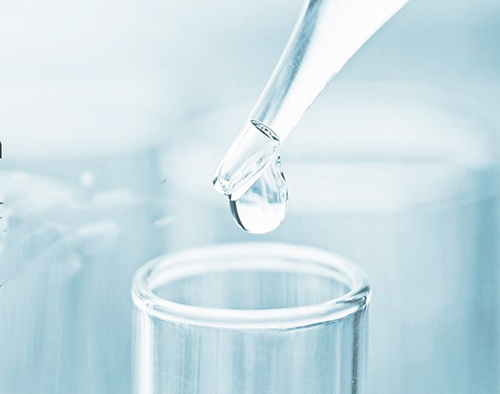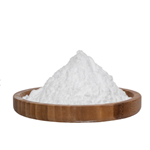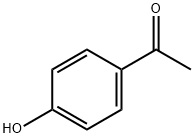Toxicity and environmental effects of para-hydroxyacetophenone
Apr 20,2022
Introduction
Para-hydroxyacetophenone, also known as 4-hydroxyacetophenone (4-Hydroxyacetophenone), 4-acetylphenol (4-Acetylphenol), p-Acetylphenol (p-Acetylphenol), 4-hydroxyphenyl methyl ketone (4 -hydroxyphenyl methyl ketone), commonly known as piceol, is a white needle-like crystal at room temperature, flammable, easily soluble in hot water, methanol, ethanol, ether, acetone, benzene, and insoluble in petroleum ether. It naturally exists in the stems and leaves of the Compositae plant, Artemisia annua L., and the roots of plants such as Artemisia annua L. This product is used in the manufacture of choleretic drugs and other raw materials for organic synthesis. Animal experiments show that this product can increase the secretion of bile in rats, and can also increase the excretion of solids, bile acid and bilirubin in bile, and has the same effect on liver damage caused by carbon tetrachloride. This product is clinically used in the treatment of hepatitis and has a certain effect on yellowing. Therefore, this product is harmful if swallowed, and it is irritating to eyes, respiratory system and skin[1].

Picture 1 Para-hydroxyacetophenone liquid
Properties
p-Hydroxyacetophenone is widely used in medicine, cosmetics and industrial fields. It is a natural plant extract, which naturally exists in the stems and leaves of the Compositae plant, Artemisia annua, the roots of plants such as Artemisia annua, Rhododendron, and Panax ginseng. It has a good effect on yellow eyes caused by diseases such as hepatitis, and also has a good auxiliary effect on yellow eyes caused by various reasons. Due to its weak molecular activity, high temperature resistance, melting point of 95-97 °C and boiling point of 296 °C, it is widely used in various liquid pharmaceuticals and can prolong the shelf life of other active ingredients under high temperature conditions. It has no harm to human skin and is the safest high-temperature auxiliary active stabilizer in the pharmaceutical industry.
Applications
Para-hydroxyacetophenone itself is a choleretic drug. It is often used as an auxiliary drug for the treatment of cholecystitis and acute and chronic jaundice hepatitis, but the application must follow the doctor's advice. In addition, p-hydroxyacetophenone is also a raw material for fine chemical synthesis, which is mostly used in the synthesis of fragrances.
Production method
The manufacture of p-hydroxyacetophenone uses phenol as a raw material, and is obtained by acylation and translocation. Mix phenol and acetyl chloride, slowly heat until no hydrogen chloride is discharged to obtain phenyl acetate, add it to nitrobenzene, add aluminum trichloride after cooling, stir for 2-3 hours, then pour it into cold water, add 1: 3 of hydrochloric acid until it is cool, extract with ether, steam the ether in the extract, steam nitrobenzene and by-product o-hydroxyacetophenone, and leave p-hydroxyacetophenone in the residue. Extraction and recrystallization yielded the product.
Toxicity and environmental effects
This product is harmful if swallowed. Exposure is irritating to eyes, respiratory system and skin. Be aware of the harmful effects of manufacturing waste and by-products on the environment. Acute toxicity: mouse oral LD50: 1500mg/kg; mouse peritoneal cavity LD50: 200mg/kg.
Packaging, storage and transportation
Packed in rigid cardboard drums lined with plastic film or kraft paper, and stored in a cool, ventilated warehouse. Keep away from fire, heat and water. It should be stored separately from oxidants and food, and should not be mixed.
The role in cosmetics
p-Hydroxyacetophenone, also known as Xinxian ketone, is called p-Hydroxyacetophenone in English. In the roots of ginseng and other plants, it is a multifunctional cosmetic ingredient with antioxidant and soothing effects; in cosmetics, it can also be used as a substitute for traditional preservatives, with antiseptic and synergistic effects, in the range of high and low pH and temperature Excellent stability inside. It also has a synergistic effect with other preservatives.
The instability coefficient of emulsions containing p-hydroxyacetophenone is significantly reduced. The lower the instability coefficient (value range of 0-1), the better the stability. Poben's use of p-hydroxyacetophenone as a bacteriostatic agent can effectively avoid traditional preservatives Compared with traditional preservatives, it is safer and milder than traditional preservatives. It has antioxidant effects while reducing sensitization and irritation, and is more suitable for sensitive and fragile skin.
Reference
1 Zhang Mingsen, editor-in-chief of Fine Organic Chemical Intermediates, Chemical Industry Press, 2008
- Related articles
- Related Qustion
Ethyl bromoacetate, also known as ethyl bromoacetate, is an organic compound with the molecular formula BrCH2COOCH2CH3. It is a colorless or yellow liquid, its vapor is poisonous.....
Apr 20,2022APILithium bis(trifluoromethanesulfonimide) is an organic compound with the chemical formula C2F6LiNO4S2....
Apr 20,2022API4'-Hydroxyacetophenone
99-93-4You may like
4'-Hydroxyacetophenone manufacturers
- 4'-Hydroxyacetophenone
-

- $1.00 / 1kg
- 2024-04-23
- CAS:99-93-4
- Min. Order: 1kg
- Purity: 99%
- Supply Ability: 300tons
- 4'-Hydroxyacetophenone
-

- $45.00 / 1KG
- 2024-04-22
- CAS:99-93-4
- Min. Order: 1KG
- Purity: 98%
- Supply Ability: 20t/month
- 4'-Hydroxyacetophenone
-

- $45.00 / 1KG
- 2024-04-22
- CAS:99-93-4
- Min. Order: 1KG
- Purity: 98%
- Supply Ability: 20t/month




